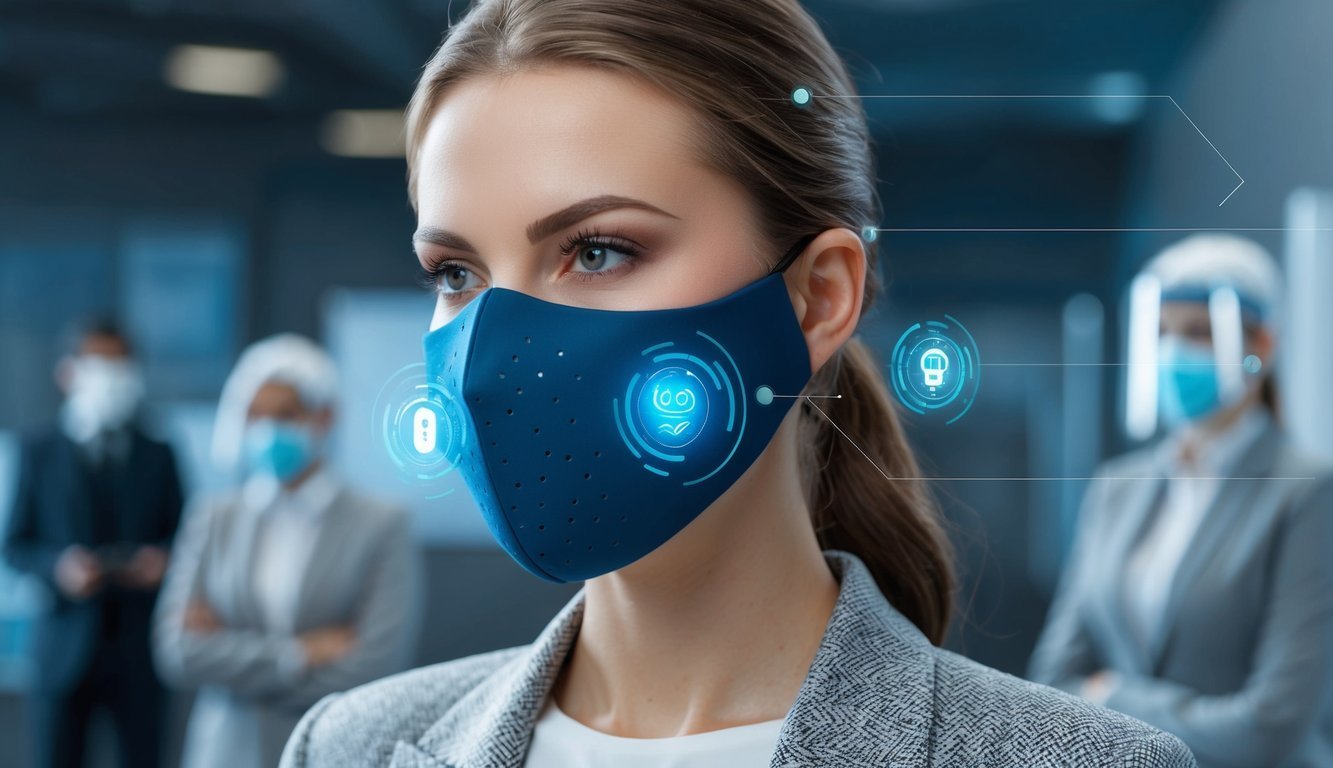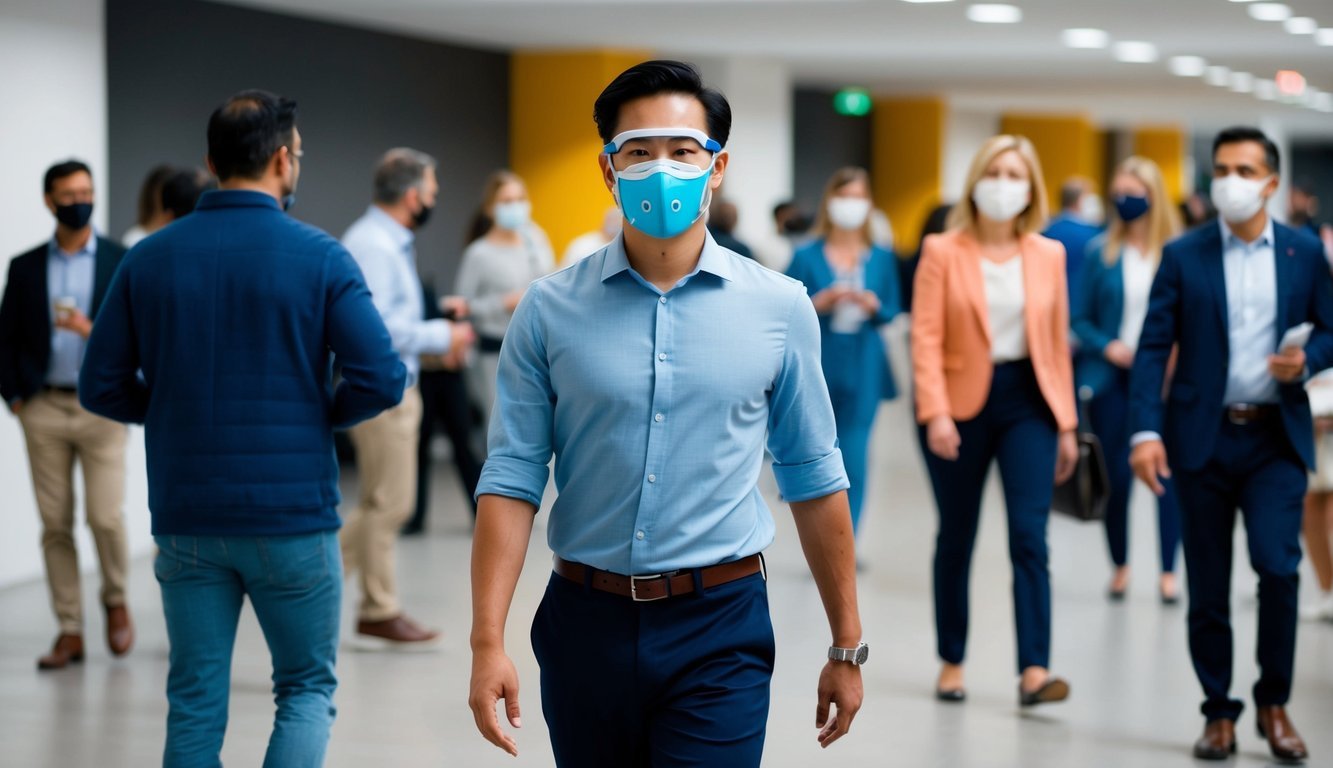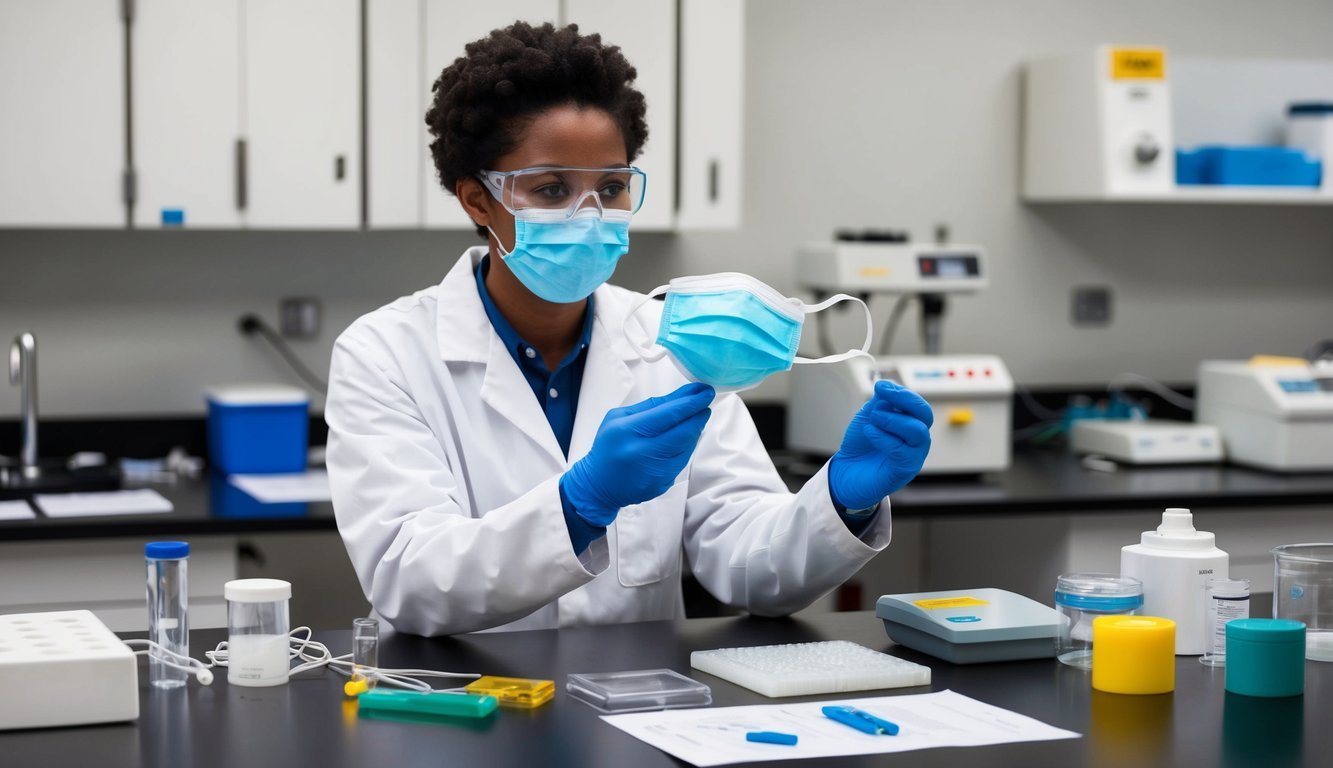PsychNewsDaily Publishers
100 Summit Drive
Burlington, MA, 01803
Telephone: (320) 349-2484
PsychNewsDaily Publishers
100 Summit Drive
Burlington, MA, 01803
Telephone: (320) 349-2484
Researchers developed a face mask with built-in sensors that detect SARS-CoV-2 in breath samples, providing results in approximately 90 minutes for rapid COVID-19 testing.

Researchers have created an exciting new face mask prototype that can detect COVID-19 quickly and accurately. This innovative mask comes with built-in sensors that analyze breath, identifying the presence of the virus that causes COVID-19, known as SARS-CoV-2. Results are available in about 90 minutes. This technology could greatly benefit health care workers and others seeking fast, reliable testing.
The new design represents a significant leap forward in personal protective equipment. Instead of relying solely on traditional testing methods, this mask can deliver immediate information, helping to reduce the spread of the virus. It also opens doors for better safety measures in crowded places or high-risk environments, providing peace of mind for everyone.
As the world continues to navigate the challenges of COVID-19, advancements like this mask highlight the potential for technology to play a key role in public health. Watching how this prototype develops could lead to widespread use, changing the way people approach health and safety in their daily lives.

Recent efforts have led to the creation of a new face mask prototype that can detect COVID-19 infections. This innovative product results from collaborative work and advancements in technology, focusing on synthetic biology and medical engineering.
The development of the diagnostic face mask emerged from a partnership between MIT and Harvard University. Researchers, including James Collins from MIT, united their expertise to create a mask capable of diagnosing COVID-19.
This collaboration combined knowledge of engineering, biology, and medicine. The teams aimed to make testing easy and accessible. By integrating various skills, they could develop a mask that provides results quickly and accurately.
Synthetic biology sensors play a crucial role in the mask’s functionality. These sensors are designed to detect specific genetic material from the virus. By incorporating CRISPR technology, the mask can identify the presence of COVID-19 with high precision.
The CRISPR system works by signaling when the virus’s genetic code is present. This allows for results within about 90 minutes. Such rapid detection is vital for timely diagnosis and treatment, especially in managing outbreaks.
Recent advancements in medical engineering have greatly contributed to the mask’s design. Experts focused on integrating technology into everyday items, like face masks. This approach ensures that healthcare solutions are not only effective but also user-friendly.
The mask prototype features button activation for ease of use. It combines comfort with advanced technology, making it practical for everyday wear. As medical engineering continues to evolve, this type of innovation could lead to new health monitoring tools in the future.

Wearable biosensors are an exciting development in technology. They can detect specific pathogens, like SARS-CoV-2, quickly and accurately. This section looks closely at how these sensors work, the role of CRISPR enzymes, and advances in paper diagnostics.
SARS-CoV-2 sensors are designed to identify the virus that causes COVID-19. These sensors can be integrated into face masks for convenient testing. When someone wears a mask with this technology, it collects samples from the air and the user’s breath.
The sensor identifies viral particles using specific techniques. It often relies on molecular recognition methods, which means it can accurately distinguish SARS-CoV-2 from other substances. This rapid detection can happen in about 90 minutes. As a result, users can get timely information about their infection status.
CRISPR enzymes play a vital role in the detection process. They are proteins that can recognize specific DNA sequences. In the case of COVID-19, CRISPR is used to target viral RNA.
Once viral RNA is identified, the CRISPR enzymes cut it, which leads to a detectable signal. This process can be very efficient, making it a powerful tool for rapid diagnosis. The combination of sensors and CRISPR technology ensures that results are both quick and accurate.
Recent advancements in paper diagnostics enhance the effectiveness of biosensors. This technology allows for the creation of simple tests on paper strips. These strips can detect viruses or other pathogens using minimal technology.
The tests are easy to use and can be produced at low cost. They often require only a small sample to provide results. This makes them perfect for widespread use, especially in areas with limited medical resources.
In summary, innovations in wearable biosensors, such as SARS-CoV-2 integration, CRISPR enzymes, and paper diagnostics, are paving the way for safer and smarter health solutions.

The new face mask prototype not only protects against COVID-19 but also detects the virus in breath samples. Understanding its safety and effectiveness involves looking at testing methods and addressing privacy concerns for users.
The prototype mask can provide quick analysis of COVID-19 compared to traditional methods. PCR tests are highly sensitive and can detect tiny amounts of the virus. These tests usually take hours for results.
Antigen tests, on the other hand, offer faster results but are less sensitive. They might miss some cases, especially in early stages of infection. The mask’s sensor aims to bridge this gap by delivering reliable detection while allowing immediate feedback to the user.
This quick detection can help reduce the spread by informing wearers right away if they might be contagious.
User privacy is a key issue with any device that collects personal data. The face mask prototype’s sensors could potentially gather information about the wearer’s health status.
To safeguard privacy, it is crucial that the design includes features to protect user data. Disposable sensors could help by preventing data storage on long-term devices.
Clear guidelines regarding data use and sharing should be established. Users should feel confident that their health information remains confidential. Building trust in the device encourages people to adopt this innovative technology.

The new face mask prototype that detects COVID-19 can play a crucial role in public health. Its use can significantly enhance safety for first responders and military personnel while also providing valuable support for health care workers during pandemics.
First responders and military personnel often face high exposure levels to viruses during their service. The prototype masks can offer immediate testing results, which helps quickly identify infected individuals.
This could ensure that those in contact with the public are not unknowingly spreading the virus. The masks can allow for better decision-making and protective measures.
Benefits include:
Health care personnel work tirelessly during a pandemic, often under significant stress. Detecting COVID-19 through prototype masks can streamline processes in hospitals and clinics.
These masks provide an extra layer of protection, allowing for quick identification of COVID-19 in both patients and staff.
Key advantages are:
By implementing these masks, health care systems can better manage resources and respond effectively to health crises.

Wearable diagnostic tools are changing healthcare by allowing real-time monitoring and identification of diseases. With advancements in technology, these tools can detect a variety of pathogens and hazardous materials, making them essential for both personal and public health.
Researchers aim to enhance wearable diagnostic tools to detect more than just COVID-19. Future prototypes may identify pathogens like Ebola and Zika through advanced biosensors.
These sensors detect bacterial nucleic acids and can respond to environmental toxins. By using biological sensors, they provide quick results, helping users take immediate action.
Imagine a mask that not only diagnoses COVID-19 but also screens for nerve toxins or dangerous chemicals in the air. This capability could significantly improve safety in everyday environments, particularly in areas prone to biological or chemical threats.
Wearable diagnostic tools will likely integrate seamlessly with smartphones. This connectivity allows users to receive alerts and interpretations of their health data instantly through a dedicated app.
Smart technology can enhance the functionality of these tools. For example, users could track their exposure to environmental toxins over time.
The app could suggest precautions based on real-time data. This integration not only personalizes health monitoring but also empowers individuals to make informed decisions, ultimately promoting safer living and working conditions.

The new face mask prototype is designed to detect COVID-19 through innovative technology. This section addresses common questions about how the mask works, its accuracy, and more.
The face mask prototype can diagnose COVID-19 in about 90 minutes. It alerts the wearer to the presence of the virus even before symptoms appear. This can help individuals take quick action to prevent spreading the virus.
The mask uses biosensors that detect the presence of SARS-CoV-2, the virus that causes COVID-19. These sensors are embedded in the fabric of the mask and work similarly to standard PCR tests.
While the mask provides results in around 90 minutes, it does not give instant results. This time allows for accurate detection, ensuring reliable information for the user.
Information about whether the mask is one-time use or reusable is still being confirmed. The design focus is on functionality and comfort, but details on its reuse will be clarified with future production information.
The detection accuracy of the mask is reported to match that of traditional PCR tests. This high level of accuracy gives users confidence in the results they receive from the mask.
The exact timeline for public availability is not set yet. Researchers are working on finalizing the prototype. After that, they will conduct necessary tests before the mask can hit the market.